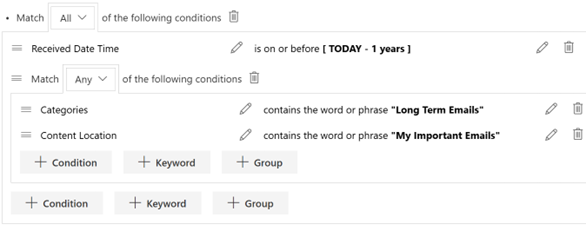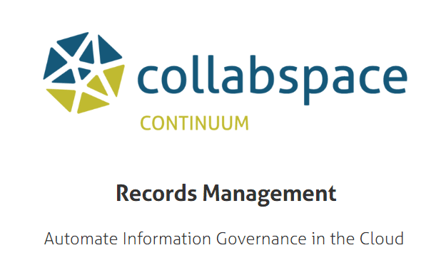Microsoft SharePoint Server 2010 introduced the concept of in-place records management, and it has caught on as one of the big records management features introduced with the latest version. But why? The short answer is: Because it appears to make user adoption more likely. The reality is somewhat different.
Benefits of in-place records management
Let's start by taking a look at the benefits of in-place records management:
- Users can easily declare a record by clicking a button on the ribbon
- The record doesn't move, so the user knows where to find it again
- Records are visibly represented by a lock icon (but only if edits and deletes are blocked)
Challenges of in-place records management
Sounds great, doesn't it? Well, it is great for basic records management. It's when we start to look at the issues that we see that it might not be a good choice for enterprise records management.
- If you block edits and deletes, then users will create new documents because they can't edit the old ones
- Administrators can undeclare records and then delete them
- Over time, a tremendous volume of documents and previous record versions will also accumulate in the library - metadata navigation can help, but not solve this issue - it *will* become unusable
- Once locked, a record cannot be moved unless it is first undeclared as a record, compounding the mess
- Backup and restore is more complicated because your records and collaborative content is all mixed together
The main benefit of the records not moving when declared is also the issue that results in the solution not being usable over time.
Using a repository approach addresses the document accumulation issue, but it has its own challenges as well.
Advantages of repository approach to records management
Let's first look at the benefits of the approach:
- Records are seperated from collaboration content, more easily allowing information policy to be applied without impact
- Records Managers can be given elevated permissions without impacting the security of collaboration sites
- Backup and restore is more effective as you can restore repository sites without impacting collaborative content (and vice versa)
Disadvantages of repository approach to records management
The main missing benefit is the usability benefit of easily locating records. This is one of the flaws of the repository approach:
- Documents are moved from their collaboration location when declared a record - this can result in findability issues, and will likely frustrate users
- The effect of navigating from a free collaboration zone to a locked down records management repository can be jarring for users
- Records repositories are often formed using the organizational file plan classification hierarchy, which is often unfamiliar to users
As you can see, there are a number of usability issues with the record repository approach, which is why in-place records management is such as hot topic. It offers quick usability wins, but at a long term cost.
Collabware CLM for SharePoint: Where does it fit?
Collabware CLM for SharePoint utilizes the record repository approach, but addresses all of the usability weaknesses, in order to create an enterprise scalable, user experience driven solution. While records repositories are used to store the record content, a number of user experience features have been added to ensure that records manager world of strucutured classifications does not limit the experience or efficiency of the user. Collabware CLM for SharePoint is essentially a user experience focused records management system. Here are some of the key features added to ensure maximum usability and findability:
- Rich global navigation to enable users to quickly access the repositories
- Hierarchical classification navigation for users who know what they are looking for (even though all repositories are sibling site collections)
- Global content surfacing so that users don't have to look for information - it comes to them instead
Collabware CLM for SharePoint: How it works
With Collabware CLM for SharePoint, you can surface records from the repositories onto team sites or pages using a configurable, context enabled, view-specific content query. These views look and act like document library views, but the content can be coming from any web application, site collection, site or library. Users don't have to worry about their documents being lost when they are declared records. Instead, they'll benefit from the creation of information workplaces that surface all the content they need using a 'single source of truth' approach.
Why spend time looking for content when it can come to you when and where you need it? This approach is what truly increases user satisfaction and adoption with a records management system.
Check out our blog for more articles on RM, such as the Importance of Record Classification. You can also learn more about Collabware CLM, our Records Management solution that integrates with SharePoint, from the free downloadable brochure:
![]()





